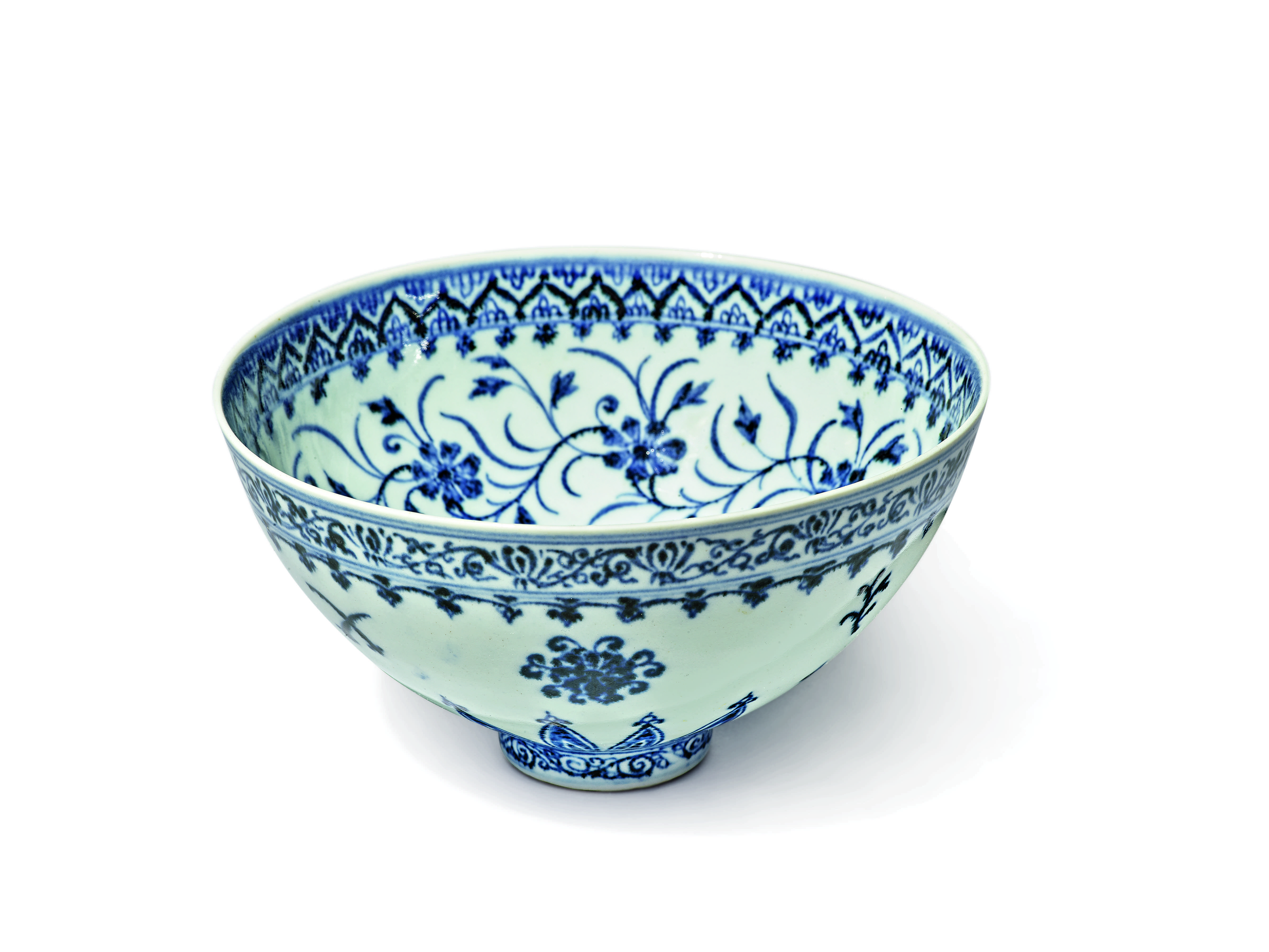This $35 bowl sold at a Connecticut yard sale is worth $500,000
The bowl turned out to be a rare, 15th-century Chinese artifact.

A small porcelain bowl bought for $35 at a yard sale in Connecticut turned out to be a rare, 15th-century Chinese artifact estimated to be worth between $300,000 and $500,000.
Last year, after purchasing the bowl, the buyer was intrigued enough by its appearance to ask experts at the Sotheby's auction house to evaluate it, according to The Associated Press. Only then did he find out that his yard-sale buy was an "exceptional and rare" bowl, with only six others of its kind known to exist, most of them in museums around the globe. It will now be auctioned at Sotheby's Important Chinese Art auction in New York on March 17.
The bowl, which is about 6.25 inches (16 centimeters) in diameter, is shaped like a lotus bud and painted with cobalt-blue floral patterns, according to the Sotheby's listing. On the inside of the bowl, there's a medallion design, surrounded by patterns of flowers and leaves; the exterior is painted with lotus, peony, chrysanthemum and pomegranate flowers surrounding miscellaneous objects, including horns and castanets.
Related Content: Gallery: Ancient Chinese warriors protect secret tomb
With its "striking combination of superb material" and "slightly exotic design that characterizes imperial porcelain of this period," the bowl is a "quintessential" product from the reign of the Ming dynasty's third emperor, known as the Yongle Emperor, who ruled from 1403 to 1424, according to Sotheby's.
The Yongle court, for which the bowl was made, brought a new style of porcelain to ancient China, "a style immediately recognizable, never surpassed, and defining the craft still in the eighteenth century," according to the listing. During Yongle's reign, the court controlled the design, production and distribution of the porcelain made in the imperial kilns.
That meant that the porcelain wasn't traded across typical channels to the Near East, Middle East and East Africa. And while larger pieces were exported to other countries, smaller ones, such as this bowl, were mostly sent to the court and are now mainly found in palace collections in Beijing and Taipei, Taiwan, according to Sotheby's.
Get the world’s most fascinating discoveries delivered straight to your inbox.
Often, the Yongle court ordered duplicates of the porcelains to be destroyed or buried so that they wouldn't be copied. And so, "only very few companion bowls" to this yard sale bowl exist, according to Sotheby's: two in the National Palace Museum in Taipei, one in the National Museum of Iran, one in the British Museum, one in the Victoria & Albert Museum in London and one that was sold at Christie's auction house in Hong Kong.
It's not clear how the bowl ended up in Connecticut.
Originally published on Live Science.

Yasemin is a staff writer at Live Science, covering health, neuroscience and biology. Her work has appeared in Scientific American, Science and the San Jose Mercury News. She has a bachelor's degree in biomedical engineering from the University of Connecticut and a graduate certificate in science communication from the University of California, Santa Cruz.


